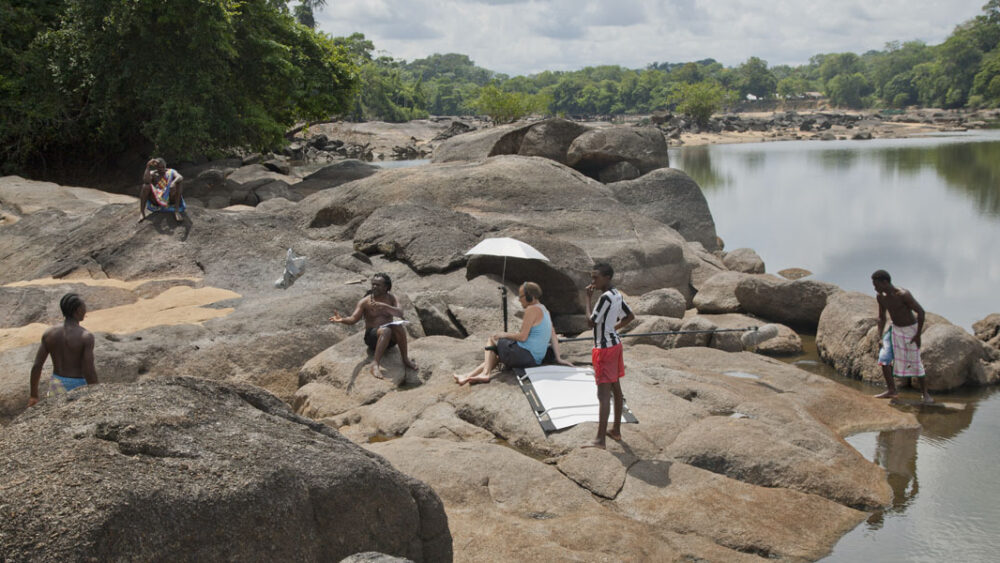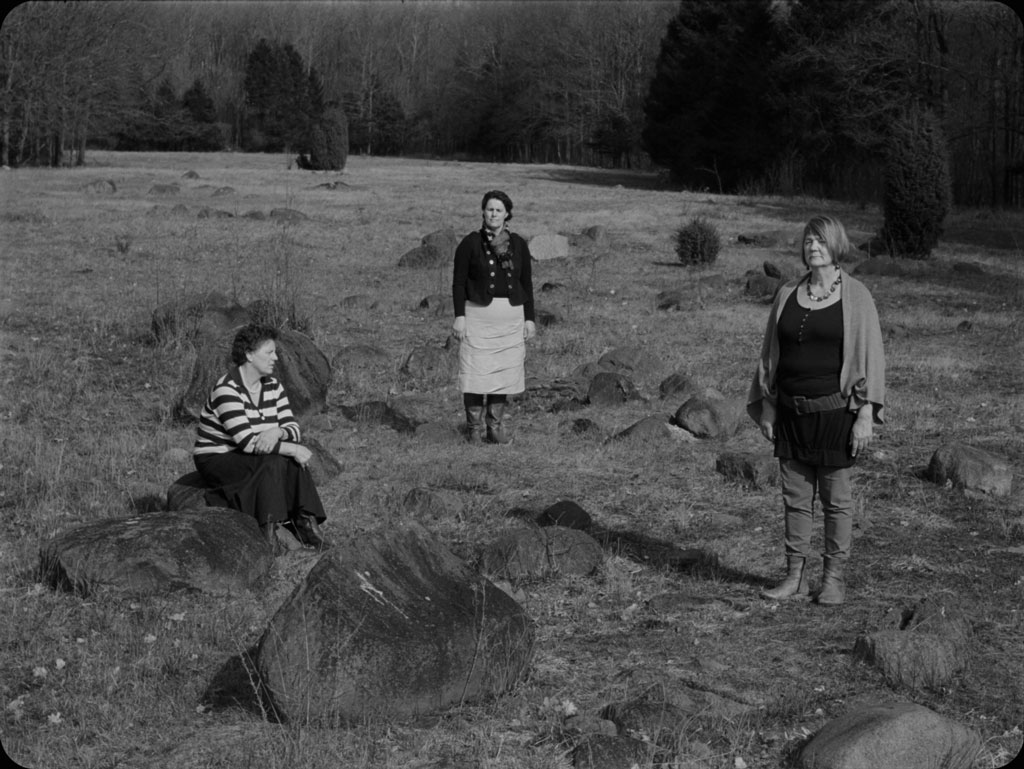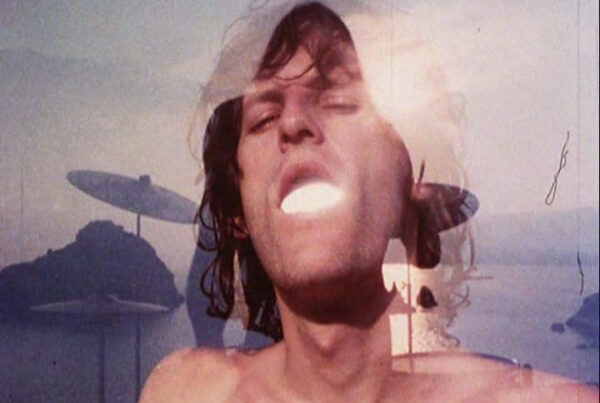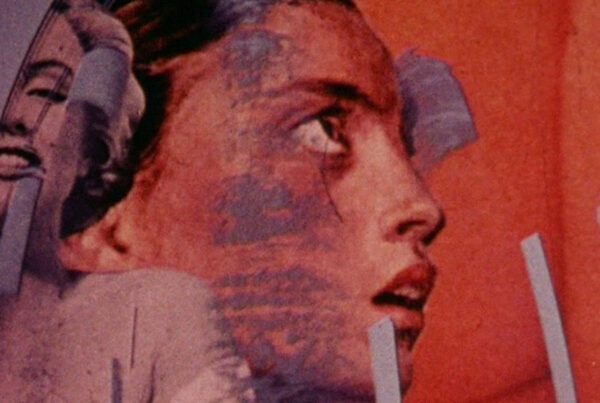Qui Parle ?
Politiques et poétiques de l’énonciation à l’âge de l’Anthropocène
MASTER SYMPOSIUM (HEAD/ECAL/EDEHEA)
Mars 2020
Un programme proposé par Aliocha Imhoff & Kantuta Quirós (curateurs et théoriciens, le peuple qui manque, Paris) sur une invitation de microsillons (Marianne Guarino-Huet et Olivier Desvoignes) responsable du Master TRANS – Pratiques artistiques socialement engagées à la HEAD de Genève. Le Master-symposium est ouvert aux étudiants en Master arts visuels de la HEAD, de l’ECAL et de l’EDEHEA.
Depuis quelques années, une vaste littérature théorique envisage de redonner des droits à la Nature, et d’y reconnaitre des sujets à même d’entrer officiellement sur la scène politique. Mais cette sorte de précipitation à vouloir faire parler ceux qui, littéralement, ne parlent pas, ceux qui « conjuguent les verbes en silence » comme le dit le poète Jean-Christophe Bailly, ne peut se faire sans convier de nouveau cette question, tout droit héritée des années 60, à savoir « qui parle », « qui » peut prétendre « parler pour » et suivant quels dispositifs de relations, question qui a émergé à la fois dans le sillage de la mort du sujet prononcée par Foucault ou Barthes puis radicalisée par Spivak, et à la fois dans le sillage de la résurgence des sujets, de leur « seconde vie », à pouvoir se dire « pour eux-mêmes », sans instance de représentation, des subaltern studies aux féminismes et aux épistémologies postcoloniales. Lorsque l’on se demandait « Qui parle ? », une scène théâtrale s’ouvrait avec ses protagonistes, interrogeant les instances qui structurent la parole démocratique et ses dispositifs, mais aussi l’histoire du cinéma documentaire, les pratiques de l’autofiction, la psychanalyse ou l’ethnographie. De cette histoire paradoxale entre vie et mort du sujet, a émergé un grand corpus d’œuvres littéraires, plastiques, filmiques et il en est de même aujourd’hui, alors que c’est la voix silencieuse du monde qui nous rattrape, les stratégies mises en place par de nombreux artistes aujourd’hui se font le lieu d’une négociation sur les formes d’échanges et de nouages avec les non-humains. Du reste, alors que le modèle dominant pour penser politiquement la voix des non-humains demeure le dispositif parlementaire, celui de la représentation et du porte-parolat (depuis Bruno Latour, Politiques de la Nature, 1999), à quelles autres politiques de la nature-culture nous invitent aujourd’hui ces propositions formulées depuis l’espace de l’art ? C’est des poétiques et politiques énonciatives et des controverses contemporaines qui traversent le monde de l’art et de la pensée aujourd’hui dont il sera question durant ce Master Symposium.
Aliocha Imhoff & Kantuta Quirós
- Introduction by Aliocha Imhoff (curator and theorist, University of Paris I / FR)
- Talk by Matthieu Duperrex (philosopher, writer, artist, University of Toulouse / FR)
- Talk and writing proposed by Mabe Bethonico & StoneStatements Editions (artist, Geneva / FR)
- Talk by Christian Alonso (art historian, curator, University of Barcelona / EN)
- Talk by Lonnie Van Brummelen (artist, filmmaker, Amsterdam / EN)
- Talk by Zuleikha Chaudhari (artist, stage director, New Delhi / EN)
- Panel discussion with Matthieu Duperrex, Mabe Bethonico, Christian Alonso, Zuleikha Chaudhari, Lonnie Van Brummelen (mix of French and English)
Introduction par
Aliocha Imhoff
 Aliocha Imhoff and Kantuta Quirós are art theorists, curators and filmmakers, based in Paris, founders of the curatorial platform le peuple qui manque – a people is missing. For several years, they have been developing a research project that calls for a new ecology of knowledge, based on curatorial formats, that present contemporary thought (diplomatic fictions, mock trials, staged controversies, assemblies and thought experiments on the subject at scale 1: 1). Among their latest curatorial projects and exhibitions, What Are They Asking For? To Become Something (Biennale de Lyon, 2019), A Debt of Times (exhibition at Konsthall C, Stockholm, 2018), The Trial of Fiction (Nuit Blanche, 2017), A Migrant Constituent Assembly (Centre Pompidou, 2017), among many other curatorial projects. Kantuta Quirós is Lecturer at the National School of Architecture of Nantes. Aliocha Imhoff teaches at Paris 1 University. They directed the publications Géoesthétique (B42, 2014) and Afropolitan Histories of Art, Multitudes (2014), and published Potentials of Time, Manuella Editions, 2016. They are currently developing Les Impatients, a film-essay.
Aliocha Imhoff and Kantuta Quirós are art theorists, curators and filmmakers, based in Paris, founders of the curatorial platform le peuple qui manque – a people is missing. For several years, they have been developing a research project that calls for a new ecology of knowledge, based on curatorial formats, that present contemporary thought (diplomatic fictions, mock trials, staged controversies, assemblies and thought experiments on the subject at scale 1: 1). Among their latest curatorial projects and exhibitions, What Are They Asking For? To Become Something (Biennale de Lyon, 2019), A Debt of Times (exhibition at Konsthall C, Stockholm, 2018), The Trial of Fiction (Nuit Blanche, 2017), A Migrant Constituent Assembly (Centre Pompidou, 2017), among many other curatorial projects. Kantuta Quirós is Lecturer at the National School of Architecture of Nantes. Aliocha Imhoff teaches at Paris 1 University. They directed the publications Géoesthétique (B42, 2014) and Afropolitan Histories of Art, Multitudes (2014), and published Potentials of Time, Manuella Editions, 2016. They are currently developing Les Impatients, a film-essay.
Matthieu Duperrex
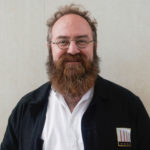 Matthieu Duperrex has a PhD in visual arts and is a member of the LLA-Créatis research center at Université Toulouse Jean Jaurès. He is also an artist and the co-founder of an organization dedicated to the visual arts called “Urbain trop urbain”: www.urbain-trop-urbain.fr. His research is predicated on field work and revolves around the implications of the Anthropocene from the perspective of literature, the human sciences and digital and visual arts. His works include Shanghai Nø City Guide (Toulouse, Urbain, trop urbain, 2012), Micromegapolis, lorsqu’une ville rencontre Gaïa (Toulouse, Urbain, trop urbain, 2013), Périphérique intérieur (Marseille, Wildproject, 2014), Voyages en sol incertain, enquête dans les deltas du Rhône et du Mississippi (Marseille, Wildproject, 2019).
Matthieu Duperrex has a PhD in visual arts and is a member of the LLA-Créatis research center at Université Toulouse Jean Jaurès. He is also an artist and the co-founder of an organization dedicated to the visual arts called “Urbain trop urbain”: www.urbain-trop-urbain.fr. His research is predicated on field work and revolves around the implications of the Anthropocene from the perspective of literature, the human sciences and digital and visual arts. His works include Shanghai Nø City Guide (Toulouse, Urbain, trop urbain, 2012), Micromegapolis, lorsqu’une ville rencontre Gaïa (Toulouse, Urbain, trop urbain, 2013), Périphérique intérieur (Marseille, Wildproject, 2014), Voyages en sol incertain, enquête dans les deltas du Rhône et du Mississippi (Marseille, Wildproject, 2019).
“Hé, vous, là-bas !” Afin de répondre à la question « Qui parle ? » que m’adressent Aliocha Imhoff et Kantuta Quirós (Le peuple qui manque), j’esquisserai le chemin philosophique suivant. Le concept d’interpellation de Louis Althusser (« Idéologie et Appareils Idéologiques d’État »,1969) mettait en scène le couple subjectivation/assujettissement, c’est-à-dire le paradoxe d’un sujet constitué par l’injonction à se conformer à une loi, à un système. Au même moment, Michel Foucault décrivait dans « L’archéologie du savoir » la mise en place de la triade sujet, savoir, pouvoir. S’il n’a jamais été aussi évident que des liens étroits unissent les actions humaines et les grands cycles physico-chimiques de la Terre, si tout un réseau de médiations sensibles vient en exhiber des preuves jusque dans notre salon ou dans la rue – comme lorsqu’il y a vingt ans on ouvrait avec Bruno Latour le journal pour remarquer « la prolifération des hybrides » –, nous sommes indéfiniment empêtrés dans des conflits d’échelle entre nos représentations et valeurs, les savoirs en présence au regard des données actuelles de la science et puis, bien sûr, les expressions politiques d’une pareille socialisation de la « nature ». Dans le même temps, que parler du réchauffement climatique puisse être devenu une fonction phatique du langage exercée sur le parking du supermarché ou dans la salle d’attente du médecin ne signifie pas pour autant que nous puissions nous assurer fermement d’une correspondance établie entre notre expérience vécue et cette gigantesque constellation de documentations, mesures, références, mises en coordination de pratiques et d’instruments qu’implique l’existence d’un nouveau régime climatique. L’Anthropocène, en somme l’idée que nous vivons dans une époque géologique qui soit au premier chef le fait des humains, se présente ainsi comme une formidable chambre expérimentale de l’interpellation en sujet.
Zuleikha Chaudhari
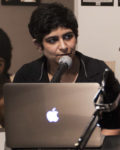 Zuleikha Chaudhari is a theatre director and lighting designer based in Delhi. Her works shift between theatre and installation. Her ongoing research considers the structures and codes of performance as well the function and processes of the actor as reality and truth production. Her current research uses archival documents (texts and photographs) to develop theatrical performances as a way of thinking about the relationship between production of memory, the role of the archive and how that pertains to the retrieval and reliving of an event. These works use a combination of reportage, portraiture, documentary, and fiction – the editing, re-interpretation and re-positioning of speculative ideas, opinions, beliefs and anecdotes towards the production of new narratives is central to these investigations about the relationship between history and theatre. 2015 onwards she has been exploring the framework of law as performance, the role of performance in law and the performativity of legal truth-production. Her works have been shown at the Weiner Festwochen, Kunsten FestivaldesArts, Festival D’Automne, Seoul Performing Arts Festival, Asian Performing Arts Festival, Tokyo, Berlin Biennale, Kochi Biennale, Dhaka Art Summit, INSERT2014, New Delhi Chronus Art Centre, Shanghai, Essl Museum, Vienna, “ IFA GALLERIES, Stuttgart and Berlin, Johannesburg Art Gallery etc.
Zuleikha Chaudhari is a theatre director and lighting designer based in Delhi. Her works shift between theatre and installation. Her ongoing research considers the structures and codes of performance as well the function and processes of the actor as reality and truth production. Her current research uses archival documents (texts and photographs) to develop theatrical performances as a way of thinking about the relationship between production of memory, the role of the archive and how that pertains to the retrieval and reliving of an event. These works use a combination of reportage, portraiture, documentary, and fiction – the editing, re-interpretation and re-positioning of speculative ideas, opinions, beliefs and anecdotes towards the production of new narratives is central to these investigations about the relationship between history and theatre. 2015 onwards she has been exploring the framework of law as performance, the role of performance in law and the performativity of legal truth-production. Her works have been shown at the Weiner Festwochen, Kunsten FestivaldesArts, Festival D’Automne, Seoul Performing Arts Festival, Asian Performing Arts Festival, Tokyo, Berlin Biennale, Kochi Biennale, Dhaka Art Summit, INSERT2014, New Delhi Chronus Art Centre, Shanghai, Essl Museum, Vienna, “ IFA GALLERIES, Stuttgart and Berlin, Johannesburg Art Gallery etc.
About Landscape as Evidence: Artist as Witness (2017-ongoing, performance)
by Zuleikha Chaudhari & Khoj International Artists’ Association
with Honourable Justice Yatindra Singh (Retd. Chief Justice, Chhatisgarh High Court); Anand Grover, Navjot Altaf, Norma Alvares, Ravi Agarwal, Sheba Chhachhi.
Landscape as Evidence: Artist as Witness stages a hearing before a Commission of Inquiry requesting that it consider the recently cleared River Linking Project under the Commissions of Inquiry Act, 1952. The matter has been referred to it by a direction of the Lok Sabha pursuant to a petition. The petitioners, Khoj International Artists’ Association and Zuleikha Chaudhari oppose the River Linking Project on the basis of the devastation caused to the environment.
Mabe Bethonico & StoneStatements Editions
Narrating Research [An audio piece]
Mabe Bethônico, Genève, March 22, 2020.
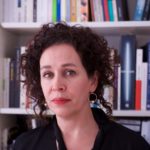 Mabe Bethônico is a Brazilian artist and researcher, working on issues related to mining, often using printed matter as means of conveying debate over destruction, economy and labour in relation to extractivist activities. She was Associate Professor at Universidade Federal de Minas Gerais (2001-2020) and since 2018 is artist researcher at ESAAA (École Supérieure d’Art Annecy Alpes) dans le projet Interreg Effondrement des Alpes. She holds a Master and PhD from the Royal College of Art, London.
Mabe Bethônico is a Brazilian artist and researcher, working on issues related to mining, often using printed matter as means of conveying debate over destruction, economy and labour in relation to extractivist activities. She was Associate Professor at Universidade Federal de Minas Gerais (2001-2020) and since 2018 is artist researcher at ESAAA (École Supérieure d’Art Annecy Alpes) dans le projet Interreg Effondrement des Alpes. She holds a Master and PhD from the Royal College of Art, London.
Christian Alonso
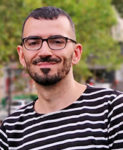 Christian Alonso is a curator, researcher, coordinator of training programs and teacher at the Department of Art History of the University of Barcelona. He is currently finishing his doctoral thesis focusing on ecosophical aesthetics in the so-called era of the Anthropocene, a topic he has addressed in his numerous publications and exhibitions. He is teacher of modern and contemporary art at the University of Lleida. He has coordinated a large number of international conferences, symposia, and seminars on art, research, mediation and critical thought. He has designed, coordinated and taught in a wide range of training programs addressed to artists, curators, and cultural producers involving different local, national and international institutions. He is editor of Mutating Ecologies in Contemporary Art (Edicions de la Universitat de Barcelona, 2019) and author of Recomposicions Maquíniques (Edicions de la Universitat de Barcelona, 2019). Further info: https://caosmosis.net/
Christian Alonso is a curator, researcher, coordinator of training programs and teacher at the Department of Art History of the University of Barcelona. He is currently finishing his doctoral thesis focusing on ecosophical aesthetics in the so-called era of the Anthropocene, a topic he has addressed in his numerous publications and exhibitions. He is teacher of modern and contemporary art at the University of Lleida. He has coordinated a large number of international conferences, symposia, and seminars on art, research, mediation and critical thought. He has designed, coordinated and taught in a wide range of training programs addressed to artists, curators, and cultural producers involving different local, national and international institutions. He is editor of Mutating Ecologies in Contemporary Art (Edicions de la Universitat de Barcelona, 2019) and author of Recomposicions Maquíniques (Edicions de la Universitat de Barcelona, 2019). Further info: https://caosmosis.net/
Lonnie Van Brummelen
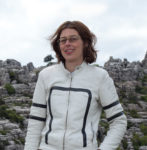 Lonnie van Brummelen (1969) & Siebren de Haan (1966) work together as collaborating artists since 2002, producing film installations, sculptures, publications and collages that explore cultural and geopolitical landscapes such as Europe’s borders, sites of resource production and global trade, and the (non) sites of cultural heritage. Most of their projects involve intensive fieldwork and collaboration. Episode of the Sea (2014) was their first crossover to cinema. The film was made in collaboration with the fishing community of Urk. Their recent film project Stones Have Laws (2018) was made in collaboration with the Surinamese theatermaker Tolin Alexander and with the Maroon community in Suriname. Venues where their artworks have been shown include Gulbenkian, Lisbon; Yerba Buena Center for the Arts, San Francisco; Concordia Gallery, Montreal; Extra City, Antwerp; HartWare, Dortmund; Palais de Tokyo, Paris; Argos, Brussels; Project Arts Centre, Dublin; SMBA and De Appel Amsterdam; CCA Vilnius; the Shanghai and Guangju Biennials; IAC Villeurbanne, France. Their works are in the public collection of Kunsthaus Zürich; Les Abattoirs, Toulouse; MUDAM Luxembourg; FRAC Marseille; Museum of Modern Art, New York; Julia Stoschek Collection, Düsseldorf; Hoffmann Sammlung, Berlin; Stedelijk Museum Amsterdam. Their films screened a.o. at MUBI, TIFF; IDFA; ICA’s Frames of Representation; MoMA’s Documentary Fortnight; Robert Flaherty Seminar; RIDM; Mar del Plata Film Festival; Berlinale and CPH:DOX Copenhagen. Van Brummelen and De Haan live and work in Amsterdam, the Netherlands.
Lonnie van Brummelen (1969) & Siebren de Haan (1966) work together as collaborating artists since 2002, producing film installations, sculptures, publications and collages that explore cultural and geopolitical landscapes such as Europe’s borders, sites of resource production and global trade, and the (non) sites of cultural heritage. Most of their projects involve intensive fieldwork and collaboration. Episode of the Sea (2014) was their first crossover to cinema. The film was made in collaboration with the fishing community of Urk. Their recent film project Stones Have Laws (2018) was made in collaboration with the Surinamese theatermaker Tolin Alexander and with the Maroon community in Suriname. Venues where their artworks have been shown include Gulbenkian, Lisbon; Yerba Buena Center for the Arts, San Francisco; Concordia Gallery, Montreal; Extra City, Antwerp; HartWare, Dortmund; Palais de Tokyo, Paris; Argos, Brussels; Project Arts Centre, Dublin; SMBA and De Appel Amsterdam; CCA Vilnius; the Shanghai and Guangju Biennials; IAC Villeurbanne, France. Their works are in the public collection of Kunsthaus Zürich; Les Abattoirs, Toulouse; MUDAM Luxembourg; FRAC Marseille; Museum of Modern Art, New York; Julia Stoschek Collection, Düsseldorf; Hoffmann Sammlung, Berlin; Stedelijk Museum Amsterdam. Their films screened a.o. at MUBI, TIFF; IDFA; ICA’s Frames of Representation; MoMA’s Documentary Fortnight; Robert Flaherty Seminar; RIDM; Mar del Plata Film Festival; Berlinale and CPH:DOX Copenhagen. Van Brummelen and De Haan live and work in Amsterdam, the Netherlands.
About Stones Have Laws (film, 100 min, 2018)
Synopsis: The rainforest of Suriname is mainly inhabited by the Maroons. They are the descendants of Africans who were shipped across the Atlantic to work as slaves on plantations. Some of these enslaved Africans managed to free themselves. They founded new communities in the Amazonian rainforest – an environment unknown to them. Here they met indigenous people who helped them survive. Building on their ancestral knowledge and on what the indigenous taught them, the Maroons developed a way of life in dialogue with the rivers, the stones and the forest. In Stones Have Laws, we teamed up with the Surinamese theater maker Tolin Alexander to collaborate on a film project that presents the colonial history that the Netherlands and Suriname share from the point of view of the Maroons, and gives insight in their way of life, not ruled by the laws of the market but by the laws of the earth. This resulted in a four-year collaboration with the Maroon community involving storytelling, collective script-making, and performance. In the film, the Maroons demonstrate rituals to contact ancestors and local forest spirits, and recite how foreign conquerors forced them to relocate over and again. In colonial times they battled fiercely against the Dutch colonial rule. Nowadays they confront multinationals that exploit their ancestral grounds for mining and logging. The film was presented with a mobile cinema to the community and received theatrical release in the UK, Ireland, and the Netherlands. (read more)
Bonus
Allora & Calzadilla, The Great Silence (2016, 16’53’’), in collaboration with Ted Chiang. The silent, subtitled, inner monologue of a parrot on the brink of extinction, reflecting on voice, silence, extraterrestrial life and human folly. The film is focused around the Arecibo Observatory, which captures and transmits radio waves from and into outer space – and whose site is also home to the critically endangered Puerto Rican parrots. Artists, dancers, writers and scientists gathered at the London Zoo to consider animal, human and artificial consciousness, language, and interspecies communication. See below for participants. Participants include writer Ted Chiang, artist Michela de Mattei; dancer Claire Filmon (performing Simone Forti); artist Rasmus Nielsen; dolphin cognition researcher Diana Reiss, as well as a remote participation by Internet pioneer Vint Cerf and a screening of The Great Silence by Allora & Calzadilla (in collaboration with Ted Chiang).
